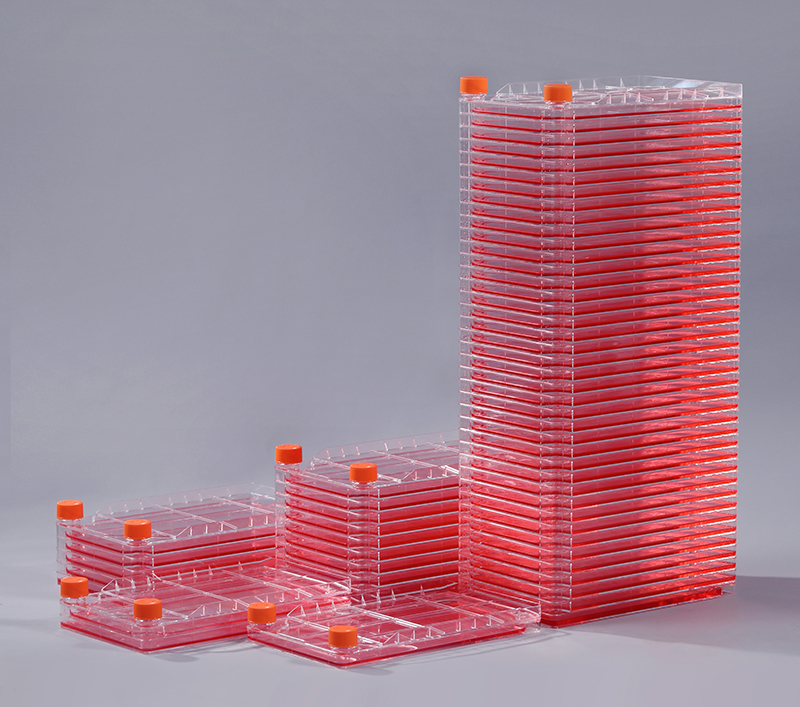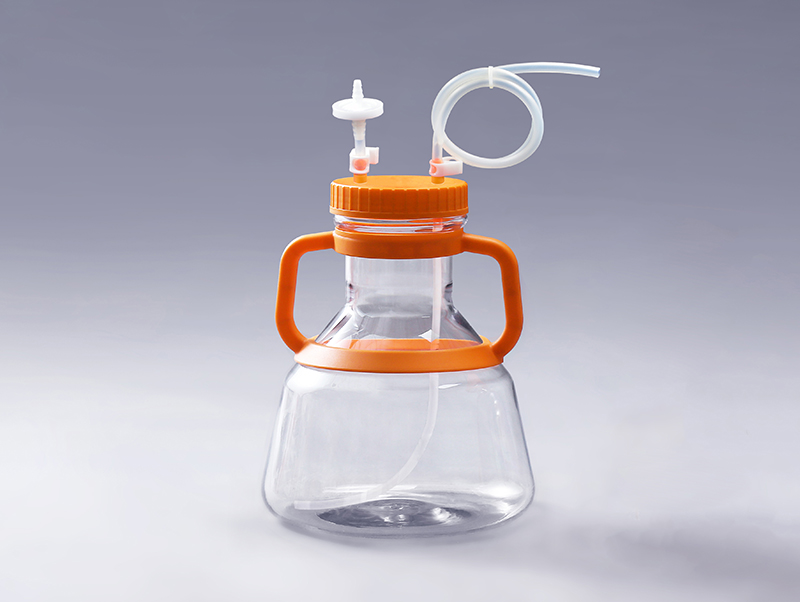Clinical Characterisation and Management of the Main Treatment-Induced Toxicities in Patients with Hepatocellular Carcinoma and Cirrhosis
肝细胞癌和肝硬化患者主要治疗引起的毒性的临床特征和处理
The incidence of hepatocellular carcinoma continues to increase worldwide. In almost all cases, hepatocellular carcinoma develops in subjects with hepatic cirrhosis and patients can therefore present symptoms that are attributable to both conditions. There are several ablation techniques currently available for the treatment of unresectable HCC associated with early-stage cirrhosis. Moreover, novel therapies with biological agents and immunotherapy have come to be standard options in the approach to systemic treatment of hepatocellular carcinoma. However, in addition to being costly, these drugs are not devoid of adverse effects and their management cannot forgo the consideration of the underlying hepatic impairment. Therefore, these patients require a mandatory multidisciplinary management.
肝细胞癌的发病率在全球范围内持续增加。在几乎所有情况下,肝细胞癌都会在患有肝硬化的受试者中发展,因此患者可能会出现可归因于这两种情况的症状。目前有几种消融技术可用于治疗与早期肝硬化相关的不可切除的 HCC。此外,生物制剂和免疫疗法的新疗法已成为肝细胞癌全身治疗方法的标准选择。然而,除了价格昂贵之外,这些药物并非没有副作用,而且它们的管理也不能放弃对潜在肝功能损害的考虑。因此,这些患者需要强制性的多学科管理。

The incidence of HCC continues to increase worldwide, especially in Western countries, where its presence is closely related to that of hepatic cirrhosis [1]. In almost 80% of cases, the tumour develops in a liver that has undergone the evolutionary effects of anatomic remodelling and a transformation that have led to the development of cirrhosis. In addition, the aetiology that caused and influenced this evolution is very often associated with underlying hepatitis B or C infection, as well as alcohol abuse and metabolic conditions secondary to non-alcoholic steatohepatitis (NASH) [2]. This creates a diverse stratification not only of the aetiological factors underlying the transformation process and their consequent management, but also of the treatment of the tumour and the factors influencing prognosis. The prognosis for this kind of tumour has changed greatly over the last two decades with the advent of novel treatment options associated with the screening programmes provided to patients with cirrhosis that make it possible to identify HCC at an early stage, and therefore to implement potentially increasingly curative treatments. The treatment options for HCC can be broken down into surgical therapies (i.e., resection, cryoablation and liver transplantation) and nonsurgical therapies that can target the liver and are therefore termed “locoregional” (such as, for example, percutaneous ethanol injection, radiofrequency/microwave thermal ablation, transarterial chemoembolisation, external beam radiotherapy) or systemic treatments (chemotherapy, targeted therapy, immunotherapy with checkpoint inhibitors). In some cases, it is somewhat difficult to assess the benefits in terms of survival of a systemic therapy regimen in patients with advanced HCC, as survival is often determined not so much by the aggressiveness of the tumour or by the impact of a systemic treatment, but primarily by the degree of hepatic dysfunction generated by the liver disease. Systemic chemotherapy is not usually well tolerated by these patients with advanced HCC and its use has a limited scope, also in view of the rather disappointing results. Moreover, for patients with Child-Pugh class C cirrhosis and those with an impaired performance status (PS) or severe comorbidities, supportive care alone still appears to be the most indicated option. Prior to 2008, there was no truly efficacious systemic therapy for patients with advanced HCC or those who were refractory to locoregional therapies. There has been a consequent renewed interest in and enthusiasm for systemic therapy for HCC with the publication of data showing that the targeted agents sorafenib [3,4] and regorafenib [5] were able to improve survival compared to the best supportive therapy. Subsequently, the benefit in terms of survival was demonstrated also for second-line therapy with nivolumab [6,7,8], an immune checkpoint inhibitor, and lenvatinib [9] which was seen to be non-inferior to sorafenib as first-line therapy. Systemic therapy is now considered to be appropriate for patients with unresectable advanced HCC who are not eligible for or who have progression following locoregional treatment and whose liver function is likely to be able to tolerate the therapy (e.g., Child-Pugh class A or B7 cirrhosis). According to the most recent National Comprehensive Cancer Network (NCCN) guidelines [10], there are currently three systemic therapy options that can be used for first-line treatment (in chronological order of approval): sorafenib [3,4], lenvatinib [9,11] and the more recent atezolizumab plus bevacizumab combination [12]. In those patients who are not eligible for treatment with a tyrosine kinase inhibitor (TKI), immunotherapy with nivolumab can be considered [13]. At progression, in those patients who maintain Child-Pugh class A or, for certain agents, also class B7 liver function, and depending on the administered first-line treatment, there are a number of systemic therapy options: regorafenib (5), cabozantinib [14], ramucirumab [15], lenvatinib or immunotherapy with nivolumab [6,7,8], nivolumab plus ipilimumab [16], pembrolizumab [17], or sorafenib.
HCC 的发病率在世界范围内持续增加,特别是在西方国家,其存在与肝硬化密切相关 [ 1 ]。在几乎 80% 的病例中,肿瘤发生在肝脏中,该肝脏经历了解剖重塑的进化效应和导致肝硬化发展的转变。此外,导致和影响这种演变的病因通常与潜在的乙型或丙型肝炎感染,以及继发于非酒精性脂肪性肝炎 (NASH) 的酒精滥用和代谢状况有关 [ 2]。这不仅对转化过程及其后续管理的病因因素进行了多样化的分层,而且对肿瘤的治疗和影响预后的因素也进行了分层。在过去的二十年中,随着与提供给肝硬化患者的筛查计划相关的新型治疗方案的出现,这种肿瘤的预后发生了很大变化,这使得早期识别 HCC 成为可能,因此可能越来越多地实施治疗性治疗。HCC 的治疗选择可以分为手术治疗(即切除、冷冻消融和肝移植)和可以靶向肝脏并因此被称为“局部区域”的非手术治疗(例如,经皮乙醇注射、射频/微波热消融、经动脉化疗栓塞、外照射放疗)或全身治疗(化疗、靶向治疗、检查点抑制剂免疫治疗)。在某些情况下,很难评估晚期 HCC 患者全身治疗方案对生存的益处,因为生存通常不是由肿瘤的侵袭性或全身治疗的影响决定的,但主要由肝病产生的肝功能障碍程度决定。这些晚期 HCC 患者通常不能很好地耐受全身化疗,并且其使用范围有限,同样考虑到相当令人失望的结果。此外,对于 Child-Pugh C 级肝硬化患者和体能状态(PS)受损或有严重合并症的患者,单独的支持性护理似乎仍然是最合适的选择。在 2008 年之前,对于晚期 HCC 或对局部治疗无效的患者,没有真正有效的全身治疗。随着数据的公布显示靶向药物索拉非尼[3 , 4 ] 和瑞戈非尼 [ 5 ] 与最佳支持疗法相比能够提高生存率。随后,免疫检查点抑制剂nivolumab [ 6 , 7 , 8 ] 和 lenvatinib [ 9 ]的二线治疗也证明了生存方面的益处] 这被认为不劣于索拉非尼作为一线治疗。全身治疗现在被认为适用于不适合或在局部治疗后出现进展且肝功能可能能够耐受治疗的不可切除的晚期 HCC 患者(例如 Child-Pugh A 级或 B7 级肝硬化) )。根据最新的美国国家综合癌症网络 (NCCN) 指南 [ 10 ],目前有三种全身治疗方案可用于一线治疗(按批准时间顺序):索拉非尼 [ 3 , 4 ]、乐伐替尼 [ 9 , 11 ] 和最近的 atezolizumab 加贝伐单抗组合 [ 12]。对于那些不适合接受酪氨酸激酶抑制剂 (TKI) 治疗的患者,可以考虑使用纳武单抗进行免疫治疗 [ 13 ]。在进展时,对于维持 Child-Pugh A 级或某些药物的 B7 级肝功能的患者,根据给予的一线治疗,有许多全身治疗选择:瑞戈非尼 (5)、卡博替尼[ 14 ]、雷莫芦单抗 [ 15 ]、乐伐替尼或免疫疗法与纳武单抗 [ 6、7、8 ]、纳武单抗加伊匹单抗 [ 16 ]、派姆单抗 [ 17 ] 或索拉非尼。

In almost all cases, HCC develops in subjects with hepatic cirrhosis, often as the result of hepatitis B or C virus infection, alcohol abuse or metabolic forms secondary to non-alcoholic steatohepatitis. Patients with HCC and hepatic symptoms can therefore present symptoms that are attributable to both conditions. This creates a diverse stratification not only of the aetiological factors underlying the transformation process and their consequent management, but also of the treatment of the tumour and the factors influencing prognosis. The prognosis for HCC has changed greatly over the last two decades with the advent of novel treatment options associated with the screening programmes provided to patients with cirrhosis that make it possible to identify HCC at an early stage, and therefore to implement potentially increasingly curative treatments. The treatment options for HCC can be broken down into surgical therapies (i.e., resection, cryoablation and liver transplantation) and nonsurgical therapies that can target the liver and are therefore termed “locoregional”. After the failure of locoregional therapies, systemic treatment with Sorafenib has been the standard of care for advanced HCC for a long time. AEs commonly reported with TKIs include hypertension, diarrhoea, and HFSR and most AEs occur within the first month of treatment and resolve when treatment is put on hold. Patient education and frequent monitoring for symptoms are the key to appropriately managing TKI toxicities. The development of IO therapies for patients with HCC has advanced rapidly, and clinicians should be aware of the potential toxicities. The most common irAEs are similar to those with other tumour types, but the rate of hepatitis may be slightly higher. Most relevant, toxicities should be recognized early on and addressed appropriately. Recently, ICIs have shown potential in combination treatment for advanced HCC, although they have been quite unsuccessful as single agents. Some approaches attempted for use of ICIs in combination are anti-PD-L1 plus anti-VEGF (e.g., atezolizumab plus bevacizumab), anti-PD-1 plus TKI (e.g., pembrolizumab plus lenvatinib), anti-PD-L1 plus anti-CTLA-4 (e.g., nivolumab plus ipilimumab). In IMbrave 150 trial, the combination of atezolizumab plus bevacizumab has shown an OS advantage over TKI sorafenib, joining today this therapy as a frontline option for advanced HCC. For those who are not candidates for the atezolizumab—bevacizumab combination, either sorafenib or lenvatinib are appropriate alternative. Multiple ongoing trials with ICIs, VEGF inhibitors, and TKIs in the systemic treatment of advanced HCC promise expanding options for frontline and second-line therapies in HCC. These patients require a multidisciplinary management, especially calling for close interaction between the hepatologist and the oncologist. However, there are currently no biomarkers able to predict the toxicity of a given systemic treatment. A careful selection of patients based on their comorbidities and the functional status of their chronic liver disease therefore remains crucial. In order not to deprive patients of a systemic therapeutic option a priori, it is common clinical practice to adopt the empirical convention of initiating treatment with prudential doses of TKI before gradually increasing them in accordance with their tolerance.

在几乎所有情况下,HCC 都会在患有肝硬化的受试者中发展,这通常是由于乙型或丙型肝炎病毒感染、酗酒或继发于非酒精性脂肪性肝炎的代谢形式所致。因此,患有 HCC 和肝脏症状的患者可能会出现可归因于这两种情况的症状。这不仅对转化过程及其后续管理的病因因素进行了多样化的分层,而且对肿瘤的治疗和影响预后的因素也进行了分层。在过去的二十年中,随着与提供给肝硬化患者的筛查计划相关的新型治疗方案的出现,HCC 的预后发生了巨大变化,这使得早期识别 HCC 成为可能,从而实施可能越来越治愈的治疗。HCC 的治疗选择可分为手术治疗(即切除、冷冻消融和肝移植)和可以靶向肝脏并因此被称为“局部区域”的非手术治疗。在局部区域治疗失败后,索拉非尼的全身治疗长期以来一直是晚期 HCC 的标准治疗。TKI 通常报告的 AE 包括高血压、腹泻和 HFSR,大多数 AE 发生在治疗的第一个月内,并在治疗暂停时消退。患者教育和经常监测症状是适当管理 TKI 毒性的关键。针对 HCC 患者的 IO 疗法发展迅速,临床医生应注意潜在的毒性。最常见的 irAE 与其他肿瘤类型相似,但肝炎的发病率可能略高。最相关的毒性应及早发现并适当处理。最近,ICIs 在晚期 HCC 的联合治疗中显示出潜力,尽管它们作为单一药物相当不成功。尝试联合使用 ICI 的一些方法是抗 PD-L1 加抗 VEGF(例如,atezolizumab 加贝伐单抗)、抗 PD-1 加 TKI(例如,派姆单抗加乐伐替尼)、抗 PD-L1 加抗CTLA-4(例如,纳武利尤单抗加易普利姆玛)。在 IMbrave 150 试验中,atezolizumab 加贝伐单抗的组合显示出优于 TKI 索拉非尼的 OS 优势,今天加入该疗法作为晚期 HCC 的一线选择。对于那些不适合 atezolizumab-bevacizumab 组合的人,索拉非尼或乐伐替尼是合适的替代方案。多项正在进行的 ICI、VEGF 抑制剂和 TKI 在晚期 HCC 系统治疗中的试验有望扩大 HCC 一线和二线治疗的选择。这些患者需要多学科管理,特别是需要肝病学家和肿瘤学家之间的密切互动。然而,目前没有生物标志物能够预测给定全身治疗的毒性。因此,根据合并症和慢性肝病的功能状态仔细选择患者仍然至关重要。为了不剥夺患者先验的全身治疗选择,通常的临床实践是采用经验惯例,即在开始治疗时谨慎剂量的 TKI,然后根据患者的耐受性逐渐增加剂量。晚期 HCC 全身治疗中的 VEGF 抑制剂和 TKI 有望扩大 HCC 一线和二线治疗的选择。这些患者需要多学科管理,特别是需要肝病学家和肿瘤学家之间的密切互动。然而,目前没有生物标志物能够预测给定全身治疗的毒性。因此,根据合并症和慢性肝病的功能状态仔细选择患者仍然至关重要。为了不剥夺患者先验的全身治疗选择,通常的临床实践是采用经验惯例,即在开始治疗时谨慎剂量的 TKI,然后根据患者的耐受性逐渐增加剂量。晚期 HCC 全身治疗中的 VEGF 抑制剂和 TKI 有望扩大 HCC 一线和二线治疗的选择。这些患者需要多学科管理,特别是需要肝病学家和肿瘤学家之间的密切互动。然而,目前没有生物标志物能够预测给定全身治疗的毒性。因此,根据合并症和慢性肝病的功能状态仔细选择患者仍然至关重要。为了不剥夺患者先验的全身治疗选择,通常的临床实践是采用经验惯例,即在开始治疗时谨慎剂量的 TKI,然后根据患者的耐受性逐渐增加剂量。晚期 HCC 系统治疗中的 TKI 和 TKI 有望扩大 HCC 一线和二线治疗的选择。这些患者需要多学科管理,特别是需要肝病学家和肿瘤学家之间的密切互动。然而,目前没有生物标志物能够预测给定全身治疗的毒性。因此,根据合并症和慢性肝病的功能状态仔细选择患者仍然至关重要。为了不剥夺患者先验的全身治疗选择,通常的临床实践是采用经验惯例,即在开始治疗时谨慎剂量的 TKI,然后根据患者的耐受性逐渐增加剂量。晚期 HCC 系统治疗中的 TKI 和 TKI 有望扩大 HCC 一线和二线治疗的选择。这些患者需要多学科管理,特别是需要肝病学家和肿瘤学家之间的密切互动。然而,目前没有生物标志物能够预测给定全身治疗的毒性。因此,根据合并症和慢性肝病的功能状态仔细选择患者仍然至关重要。为了不剥夺患者先验的全身治疗选择,通常的临床实践是采用经验惯例,即在开始治疗时谨慎剂量的 TKI,然后根据患者的耐受性逐渐增加剂量。这些患者需要多学科管理,特别是需要肝病学家和肿瘤学家之间的密切互动。然而,目前没有生物标志物能够预测给定全身治疗的毒性。因此,根据合并症和慢性肝病的功能状态仔细选择患者仍然至关重要。为了不剥夺患者先验的全身治疗选择,通常的临床实践是采用经验惯例,即在开始治疗时谨慎剂量的 TKI,然后根据患者的耐受性逐渐增加剂量。这些患者需要多学科管理,特别是需要肝病学家和肿瘤学家之间的密切互动。然而,目前没有生物标志物能够预测给定全身治疗的毒性。因此,根据合并症和慢性肝病的功能状态仔细选择患者仍然至关重要。为了不剥夺患者先验的全身治疗选择,通常的临床实践是采用经验惯例,即在开始治疗时谨慎剂量的 TKI,然后根据患者的耐受性逐渐增加剂量。目前没有生物标志物能够预测给定全身治疗的毒性。因此,根据合并症和慢性肝病的功能状态仔细选择患者仍然至关重要。为了不剥夺患者先验的全身治疗选择,通常的临床实践是采用经验惯例,即在开始治疗时谨慎剂量的 TKI,然后根据患者的耐受性逐渐增加剂量。目前没有生物标志物能够预测给定全身治疗的毒性。因此,根据合并症和慢性肝病的功能状态仔细选择患者仍然至关重要。为了不剥夺患者先验的全身治疗选择,通常的临床实践是采用经验惯例,即在开始治疗时谨慎剂量的 TKI,然后根据患者的耐受性逐渐增加剂量。
关键词: 肝细胞癌,局部治疗,全身治疗,毒性,hepatocellular carcinoma,locoregional treatments,systemic treatments,toxicities
来源:https://www.mdpi.com/2072-6694/13/3/584/htm

上一篇: 细胞培养瓶常见的规格介绍
下一篇: 细胞工厂的作用及质量